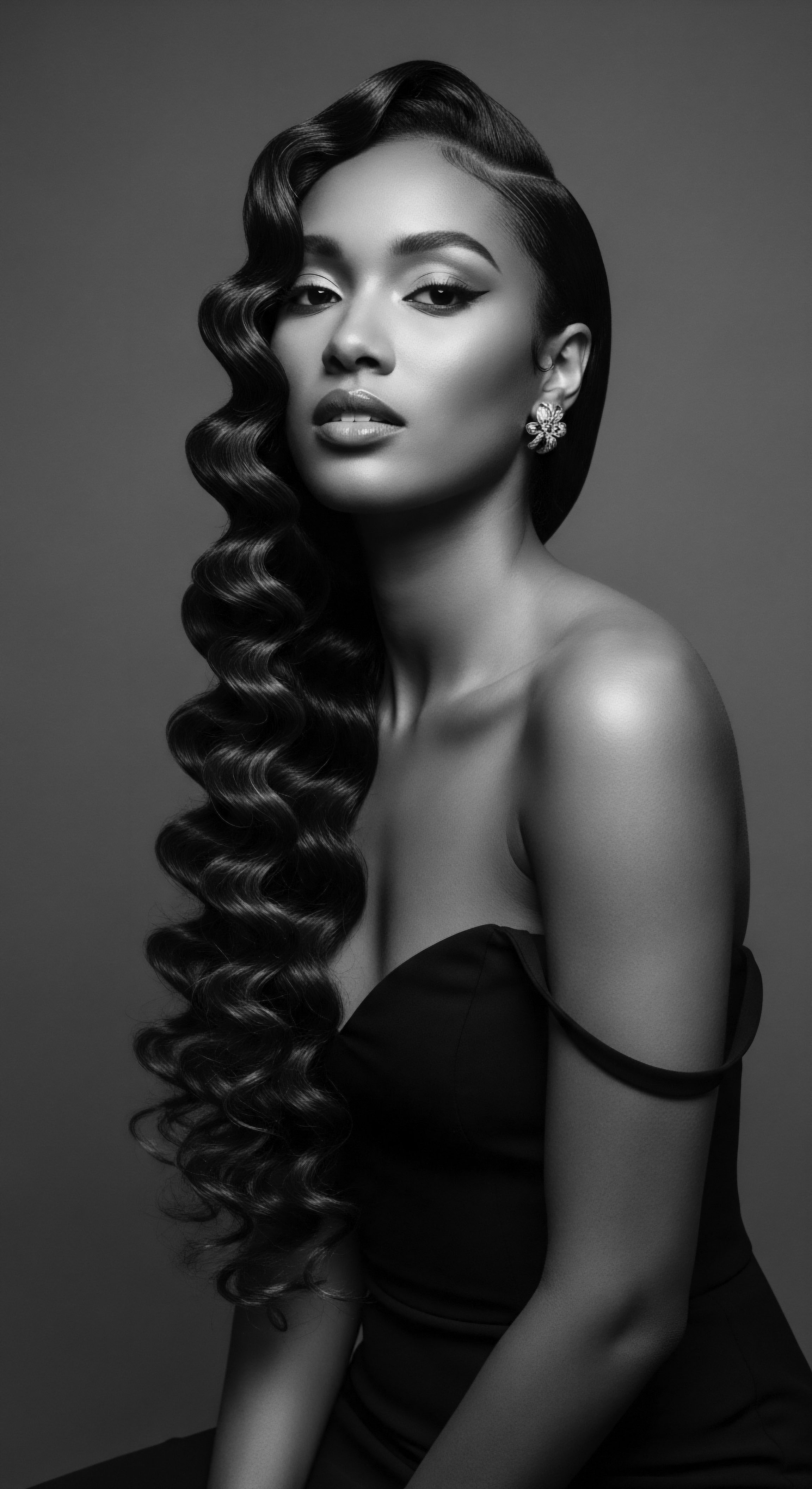
Fundamentals
The concept of Night Protection, as understood within Roothea’s profound meditations on textured hair, signifies a collection of deliberate practices and inherent biological adaptations designed to shield hair from the rigors of nocturnal hours. At its foundational level, this designation refers to the safeguarding of hair’s delicate structure, its vital moisture content, and its intrinsic curl pattern against the forces of friction, dehydration, and mechanical stress that sleep can impose. It is a recognition that the hours of rest, while restorative for the body, present unique challenges for the intricate architecture of textured strands, particularly those with coils, curls, and waves.
From a simple perspective, Night Protection means creating an environment where hair can rest undisturbed, allowing it to retain its natural oils, prevent tangling, and minimize breakage. This understanding is not merely about preserving aesthetic appeal; it reaches into the very health and longevity of the hair fiber. Without proper safeguarding, textured hair, which is often more susceptible to dryness and mechanical damage due to its unique structural properties, can experience significant wear and tear, leading to diminished vitality and strength over time. The fundamental aim is to preserve the hair’s integrity, ensuring that the work of daily care and nourishment is not undone by the night.
The most straightforward interpretation of Night Protection involves practical steps taken before sleep. These actions range from simple coverings to specific styling methods. Each method serves a similar purpose ❉ to create a barrier between the hair and potentially damaging surfaces, or to secure the hair in a way that minimizes movement and friction. This basic understanding forms the initial gateway into appreciating the wider cultural and scientific dimensions of this essential practice.
Night Protection, in its simplest interpretation, involves the conscious acts and inherent qualities that preserve textured hair’s health and form during sleep.
The biological reality of textured hair often necessitates this conscious effort. The helical or elliptical shape of the hair shaft in textured strands means that the cuticle layers, which act as the hair’s protective outer shield, are often more exposed at the curves and bends. This structural characteristic renders textured hair more prone to moisture loss and mechanical abrasion compared to straighter hair types.
Consequently, the night, with its prolonged contact against absorbent or abrasive surfaces like cotton pillowcases, becomes a period of potential vulnerability. Night Protection, therefore, functions as a critical intervention, mitigating these inherent susceptibilities and supporting the hair’s natural resilience.
Consider the impact of friction alone. As an individual shifts during sleep, hair rubs against the pillowcase. For textured hair, this repeated contact can lift the cuticle, leading to frizz, dullness, and eventually, breakage.
The absorption of natural sebum and applied moisturizers by common bedding materials further exacerbates dryness, stripping the hair of its protective lipid layer. Understanding these basic physical interactions lays the groundwork for appreciating why Night Protection is not merely a preference, but a foundational element of effective textured hair care.
This initial exploration of Night Protection provides a clear explanation of its core purpose. It highlights the direct physical and biological reasons why safeguarding hair during sleep holds such importance, particularly for those whose hair carries the unique characteristics of textured strands. The practice represents a proactive stance, an acknowledgement of hair’s living nature and its need for deliberate preservation.
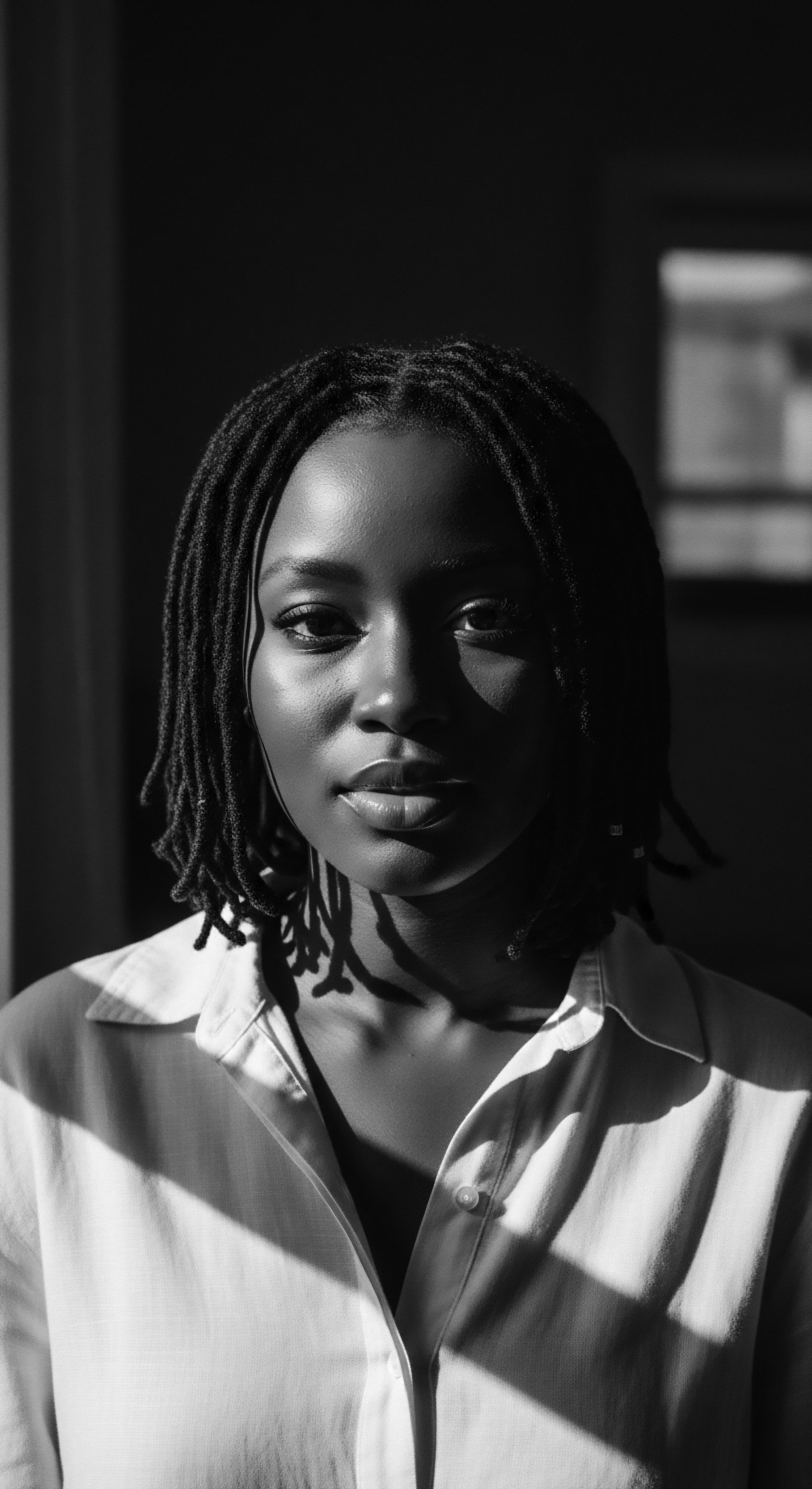
Intermediate
Moving beyond the basic definition, an intermediate understanding of Night Protection deepens into its historical echoes and the living traditions that have shaped its practice within communities connected to textured hair heritage. This perspective recognizes that Night Protection is not a contemporary invention, but rather a continuation of ancestral wisdom, passed down through generations, adapting to new materials while retaining its core intention. The meaning of Night Protection here broadens to encompass not just physical preservation, but also the cultural significance and the deep connection to self-care as an act of heritage.
The historical practices surrounding Night Protection are deeply rooted in the experiences of Black and mixed-race communities, where the care and adornment of textured hair have always held profound cultural weight. Before the advent of modern hair products or specialized sleep accessories, ancestral practices provided ingenious solutions for preserving hair overnight. These methods were often born of necessity, stemming from conditions where hair was subjected to harsh environmental elements, labor, or simply the daily realities of life without readily available commercial products.
One powerful illustration of Night Protection’s historical roots lies in the evolution of head coverings. In many African societies, head wraps and intricate braiding patterns served as both expressions of identity and practical means of protecting hair from the elements during the day. This protective ethos extended into the night. As Ayana Byrd and Lori Tharps recount in their seminal work, Hair Story ❉ Untangling the Roots of Black Hair in America (2001), the headwrap, and later the bonnet, became indispensable tools within the African diaspora.
These coverings were not merely fashion statements; they were essential for preserving styles, retaining moisture, and preventing tangling, particularly for women who often had limited time for elaborate daily hair routines. This historical example underscores the enduring significance of Night Protection as a practice of resilience and resourcefulness, a legacy passed down through generations (Byrd & Tharps, 2001).
Night Protection carries a rich historical resonance, embodying ancestral practices of care and preservation deeply rooted in the textured hair experiences of the African diaspora.
The meaning of Night Protection, at this intermediate level, therefore includes the understanding that these practices are a form of inherited knowledge. It is a recognition of how communities, through observation and innovation, developed techniques to mitigate the unique vulnerabilities of textured hair. This knowledge was often shared informally, from elder to youth, in the intimate spaces of homes and families, cementing its place as a communal and personal ritual. The use of specific materials, like smooth cloths for wrapping, or the adoption of particular braiding styles for sleeping, speaks to a deep, experiential understanding of hair mechanics long before scientific explanations were formalized.
Beyond the practical, Night Protection also begins to touch upon the emotional and spiritual dimensions of hair care. For many within the Black and mixed-race diaspora, hair has served as a powerful symbol of identity, resistance, and connection to ancestry. Protecting one’s hair at night, therefore, becomes an act of reverence for this heritage, a quiet moment of self-devotion that honors the wisdom of those who came before. It is a practice that acknowledges the hair as a living extension of self, deserving of gentle, consistent care.
The application of oils and butters before sleep also represents an ancient form of Night Protection. Ingredients like shea butter, coconut oil, and various plant-derived emollients were, and remain, central to traditional African hair care. These substances were applied to hair and scalp not just for conditioning, but also to form a protective barrier against moisture loss during the night. The careful braiding or twisting of hair before applying these treatments further enhanced their efficacy, securing the hair and allowing the nourishing properties to absorb without undue disturbance.
- Hair Bonnets ❉ Evolved from headwraps, these coverings became a staple for protecting styled hair and retaining moisture, especially in African American communities, symbolizing practicality and self-preservation.
- Silk or Satin Wraps ❉ While cotton absorbs moisture and creates friction, smooth fabrics like silk or satin were either adapted or sought out for their ability to allow hair to glide, preserving hydration and minimizing mechanical stress during sleep.
- Protective Styles ❉ Braids, twists, and Bantu knots, historically worn for both aesthetic and practical reasons, inherently serve as a form of Night Protection by securing hair strands, preventing tangling, and reducing exposure to friction.
- Overnight Oiling ❉ The application of natural oils and butters, such as Shea Butter or Castor Oil, before sleep creates a lipid barrier, preventing moisture evaporation and conditioning the hair, a practice deeply embedded in many African and diasporic traditions.
Understanding Night Protection at this level requires an appreciation for its continuity across time and its adaptability across different cultural contexts. It is a testament to the ingenuity and deep care that communities have always held for their textured hair, recognizing its unique needs and devising methods to safeguard its vitality. This intermediate view bridges the gap between simple actions and their profound historical and cultural underpinnings, presenting Night Protection as a dynamic tradition rather than a static concept.
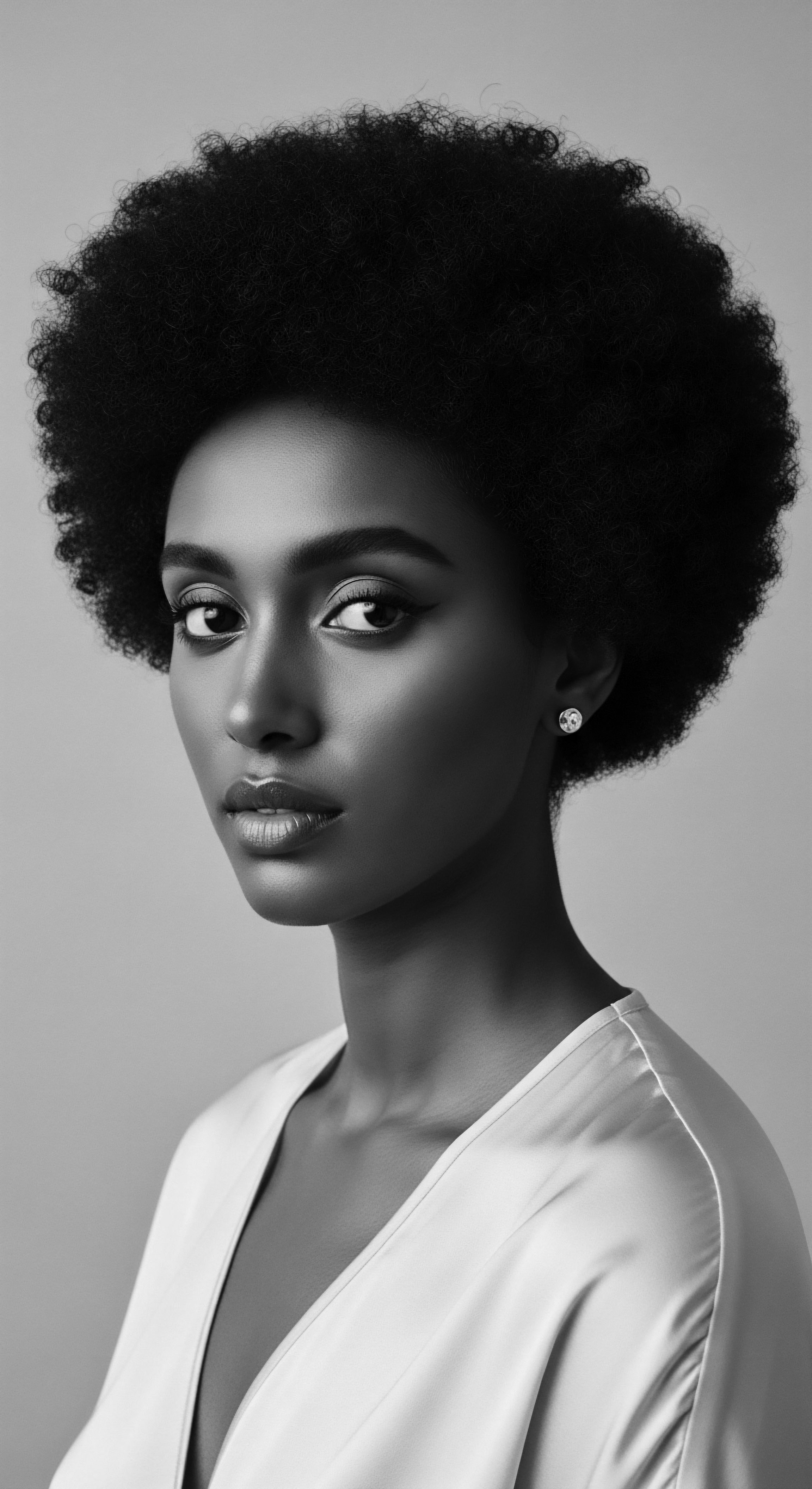
Academic
At an academic stratum, the elucidation of Night Protection transcends practical application, delving into its multifaceted significance as a phenomenon encompassing biological imperative, socio-cultural construction, and an evolving expression of identity within the textured hair experience. Here, Night Protection is defined as a complex interplay of biophysical principles, inherited ethnobotanical wisdom, and the psychosocial dimensions of hair care, particularly pertinent to Black and mixed-race populations. This advanced perspective requires a rigorous examination of the underlying mechanisms that render nocturnal care essential for textured hair, alongside a scholarly appreciation for its historical trajectory and its contemporary role in affirming cultural heritage and personal well-being.
From a biophysical standpoint, the Night Protection concept addresses the unique structural vulnerabilities of textured hair. Unlike straight hair, which typically possesses a circular cross-section, coiled, curly, and wavy hair strands exhibit elliptical or flattened cross-sections. This morphological distinction means that the cuticle, the outermost protective layer of the hair shaft, is less uniformly distributed along the length of the strand, particularly at the points of curvature. Consequently, textured hair is inherently more susceptible to cuticle lifting, moisture egress, and mechanical fracture when subjected to abrasive forces.
During sleep, the prolonged and repetitive friction against bedding materials, especially those with high surface roughness like cotton, can significantly compromise the cuticle integrity. This leads to increased porosity, accelerated moisture loss via evaporation, and heightened susceptibility to tangling and breakage. The academic inquiry into Night Protection therefore examines the tribological properties of hair-to-surface interactions during sleep and the efficacy of various interventions in mitigating these deleterious effects.
Furthermore, the meaning of Night Protection extends into the realm of chronobiology and hair physiology. The circadian rhythm influences various biological processes, including sebaceous gland activity and trans-epidermal water loss. While research specifically on nocturnal hair physiology in textured hair is an emerging field, it is understood that prolonged periods of rest can lead to stagnation of natural oils and potential moisture imbalances if the hair is not adequately prepared.
Night Protection, through practices like oiling and protective styling, serves as a countermeasure, maintaining optimal hydration and structural cohesion throughout this extended period of inactivity. This proactive approach minimizes the energetic cost of daily hair repair, preserving the hair’s intrinsic resilience and promoting its long-term vitality.
Night Protection, viewed academically, is a complex intersection of biophysical principles, inherited ethnobotanical wisdom, and the psychosocial dimensions of hair care for textured strands.
Historically, the concept of Night Protection within Black and mixed-race communities is a profound testament to adaptive ingenuity and cultural continuity. Enslaved African women, stripped of many cultural markers, preserved and adapted hair care practices, including nocturnal protection, out of both necessity and a deep connection to their identity. These practices, often communal and intergenerational, involved elaborate braiding, twisting, and wrapping techniques using available materials to preserve hair health amidst arduous conditions and limited resources. The evolution of the hair bonnet, from a practical necessity to a cultural symbol, represents a powerful historical trajectory of Night Protection.
Early 20th-century Black hair care manuals and community lore frequently emphasized specific nightly routines—wrapping hair in silk or satin, securing it in large, loose braids or twists—to preserve the week’s styling efforts and safeguard the hair from environmental stressors. These were not mere cosmetic rituals; they were deeply embedded in the daily survival and cultural expression of a people.
The psychosocial dimensions of Night Protection are equally compelling. For individuals with textured hair, the act of preparing one’s hair for the night is often a deeply personal ritual, a moment of quiet self-care that transcends mere physical maintenance. It represents an affirmation of one’s natural hair identity in a world that has historically marginalized and denigrated textured hair.
This practice becomes a form of resistance against Eurocentric beauty standards, a reclaiming of ancestral wisdom, and a deliberate choice to nurture one’s authentic self. The communal sharing of these practices, often learned from mothers, grandmothers, or aunties, reinforces familial bonds and cultural solidarity.
The academic investigation into Night Protection also examines its role in mitigating the psychological burden of hair damage. The chronic breakage, frizz, and dryness that can result from inadequate nocturnal care can lead to frustration, reduced self-esteem, and a diminished sense of control over one’s appearance. Effective Night Protection, therefore, contributes to positive psychological outcomes by fostering a sense of agency, promoting consistent hair health, and affirming the beauty and manageability of textured hair. It is a proactive investment in hair health that supports overall well-being.
To fully appreciate the depth of Night Protection, one might consider the application of Occlusive Barriers and Low-Friction Surfaces.
| Historical Practice (Pre-20th Century) Braiding hair into large, loose plaits or twists before sleep. |
| Contemporary Scientific Understanding / Validation Reduces individual strand friction, minimizes tangling, and maintains natural curl pattern by securing hair in a compact form, thereby decreasing surface area exposure. |
| Historical Practice (Pre-20th Century) Wrapping hair in smooth cloths (e.g. silk scarves, finely woven fabrics). |
| Contemporary Scientific Understanding / Validation Creates a low-friction interface between hair and bedding, preventing cuticle damage and moisture absorption by absorbent materials like cotton. This principle is validated by studies on fabric coefficients of friction. |
| Historical Practice (Pre-20th Century) Applying natural oils (e.g. shea butter, castor oil) to hair and scalp overnight. |
| Contemporary Scientific Understanding / Validation Provides an occlusive or semi-occlusive layer, preventing trans-epidermal water loss from the scalp and reducing moisture evaporation from the hair shaft, thus maintaining hydration and elasticity. |
| Historical Practice (Pre-20th Century) These historical methods reflect an intuitive understanding of hair biology, now affirmed by modern scientific principles, showcasing a continuous lineage of care. |
The academic understanding of Night Protection thus represents a synthesis of biological facts, historical ethnography, and sociological inquiry. It frames this seemingly simple act of nocturnal hair care as a profound cultural artifact, a testament to the resilience and adaptive wisdom of communities, and a critical component of textured hair health and identity. The practice offers insights into human ingenuity, the deep connection between personal care and cultural identity, and the enduring legacy of ancestral knowledge in contemporary wellness practices.
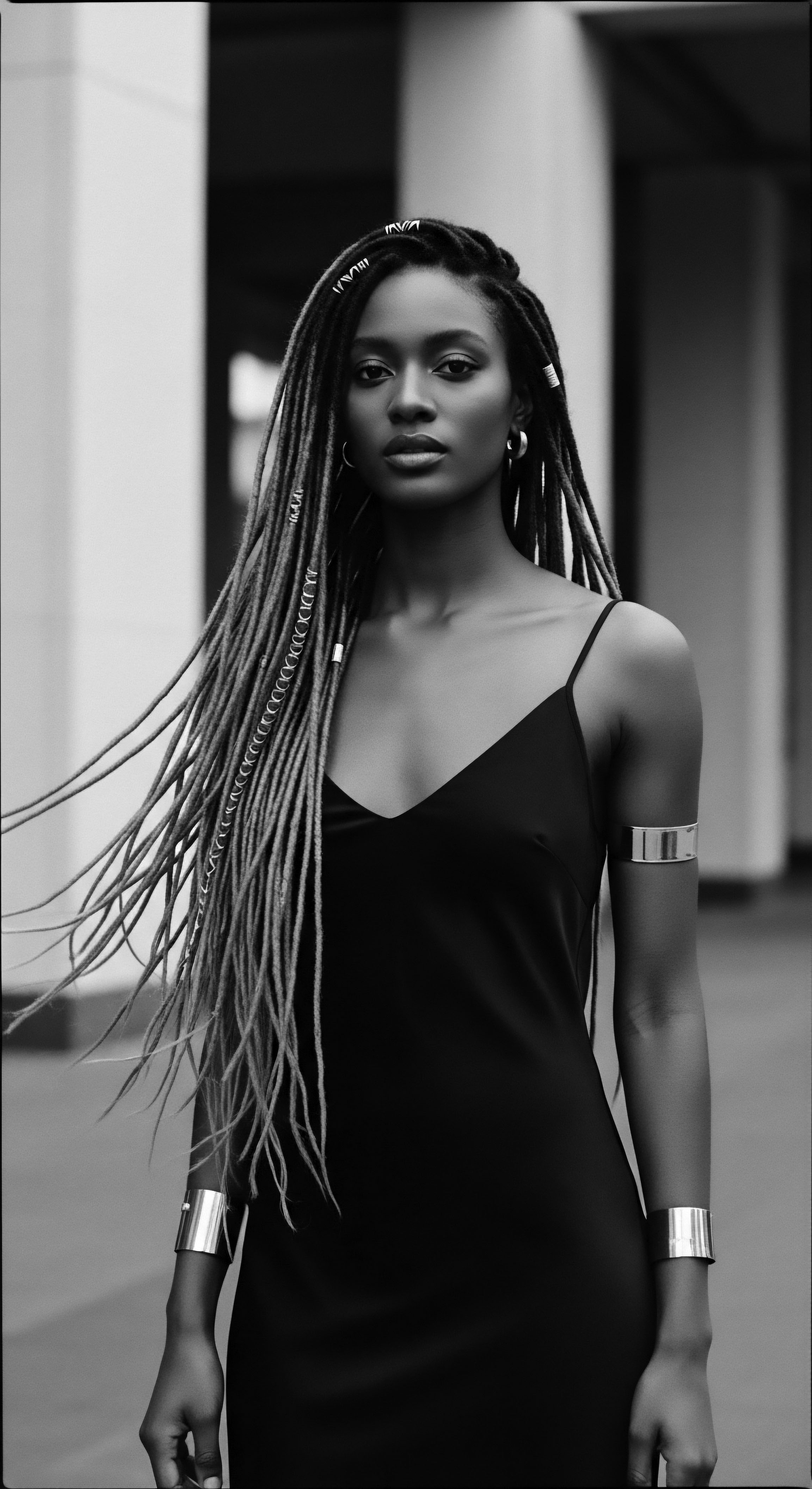
Reflection on the Heritage of Night Protection
The journey through the meaning of Night Protection, from its fundamental biophysical imperatives to its intricate academic dimensions, reveals a profound truth ❉ it is not merely a set of actions, but a living testament to the enduring heritage of textured hair. This concept, so central to Roothea’s ethos, resonates with the very soul of a strand, acknowledging the historical echoes that guide contemporary care. The wisdom embedded in securing hair before slumber, whether through ancestral wraps or modern satin bonnets, speaks volumes about a continuous dialogue between past ingenuity and present understanding.
The quiet ritual of preparing hair for the night connects us to a lineage of resilience and resourcefulness. It is a moment where the hands echo the gestures of grandmothers and great-grandmothers, who, despite immense challenges, prioritized the health and beauty of their hair. This shared history imbues each protective style and each application of oil with a deeper significance, transforming routine into ritual, and personal care into an act of cultural affirmation. The hair, in its protected state, becomes a silent repository of this enduring legacy, a symbol of continuity across generations.
Night Protection, therefore, stands as a vibrant thread in the vast tapestry of textured hair heritage. It reminds us that care is not just about products, but about knowledge, intention, and a deep respect for the intrinsic qualities of our strands. As we look to the future, this understanding compels us to honor the wisdom of our ancestors, allowing their timeless practices to inform and enrich our contemporary approaches to hair wellness. The unbound helix, safeguarded through the night, rises each morning as a testament to this unbroken chain of care, ready to face the day, rooted in its profound and beautiful past.
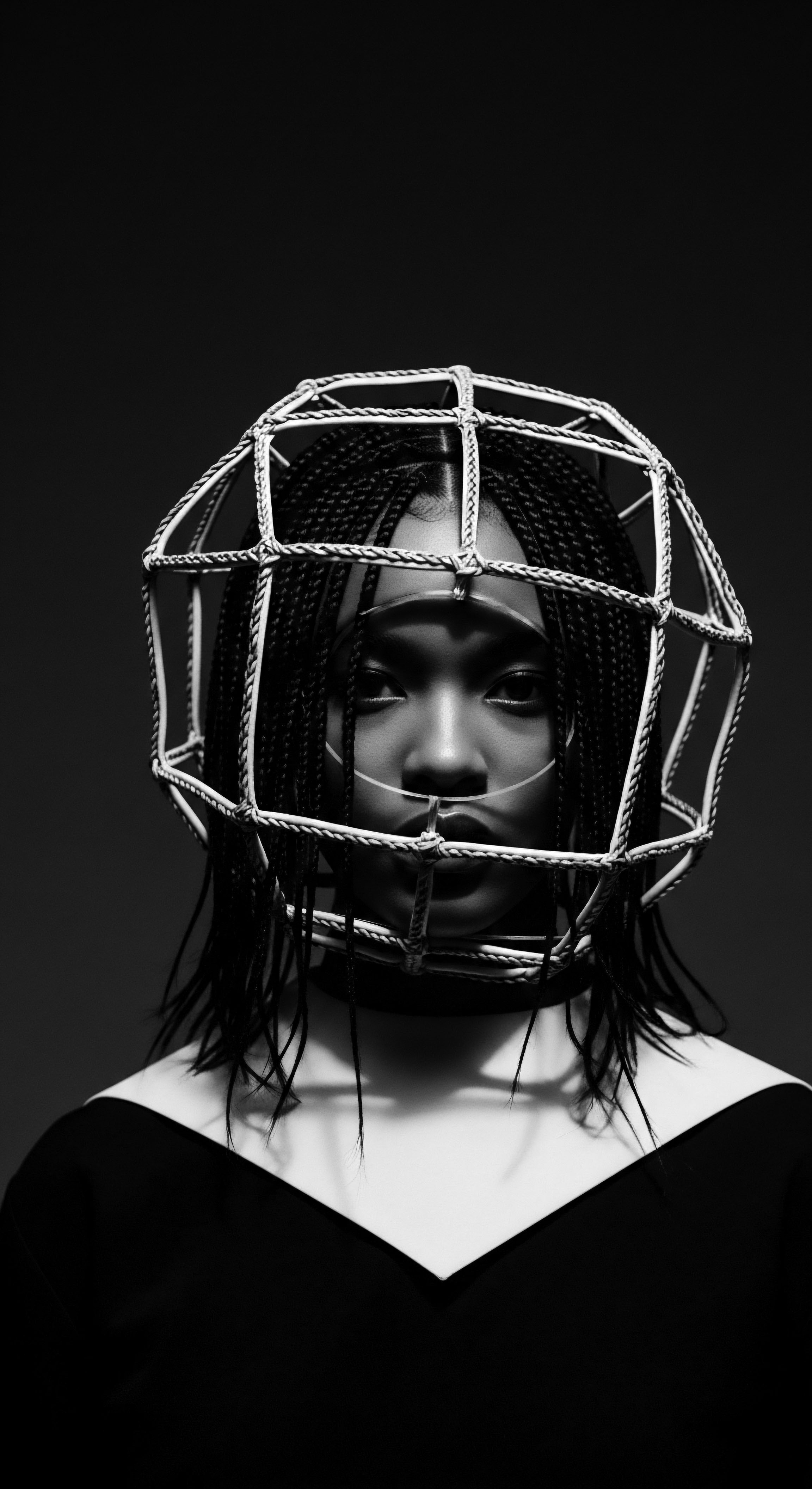
References
- Byrd, A. & Tharps, L. (2001). Hair Story ❉ Untangling the Roots of Black Hair in America. St. Martin’s Press.
- Hunter, K. (2011). Styling Jim Crow ❉ African American Beauty, Fashion, and Hair Culture in New Orleans, 1700s-1900s. Oxford University Press.
- Mercer, K. (1994). Welcome to the Jungle ❉ New Positions in Cultural Studies. Routledge.
- Banks, I. (2000). Hair Matters ❉ Beauty, Power, and the Politics of Hair in African American Culture. New York University Press.
- Gittens, A. (2016). Afro-textured Hair ❉ The Science and Culture. Independently Published.
- Hall, S. (1997). Representation ❉ Cultural Representations and Signifying Practices. Sage Publications.
- Opoku, A. (2019). African Hair ❉ A Cultural and Historical Perspective. Independently Published.
- Weitz, R. (2004). Rapunzel’s Daughters ❉ What Women’s Hair Tells Us About Women’s Lives. Farrar, Straus and Giroux.
